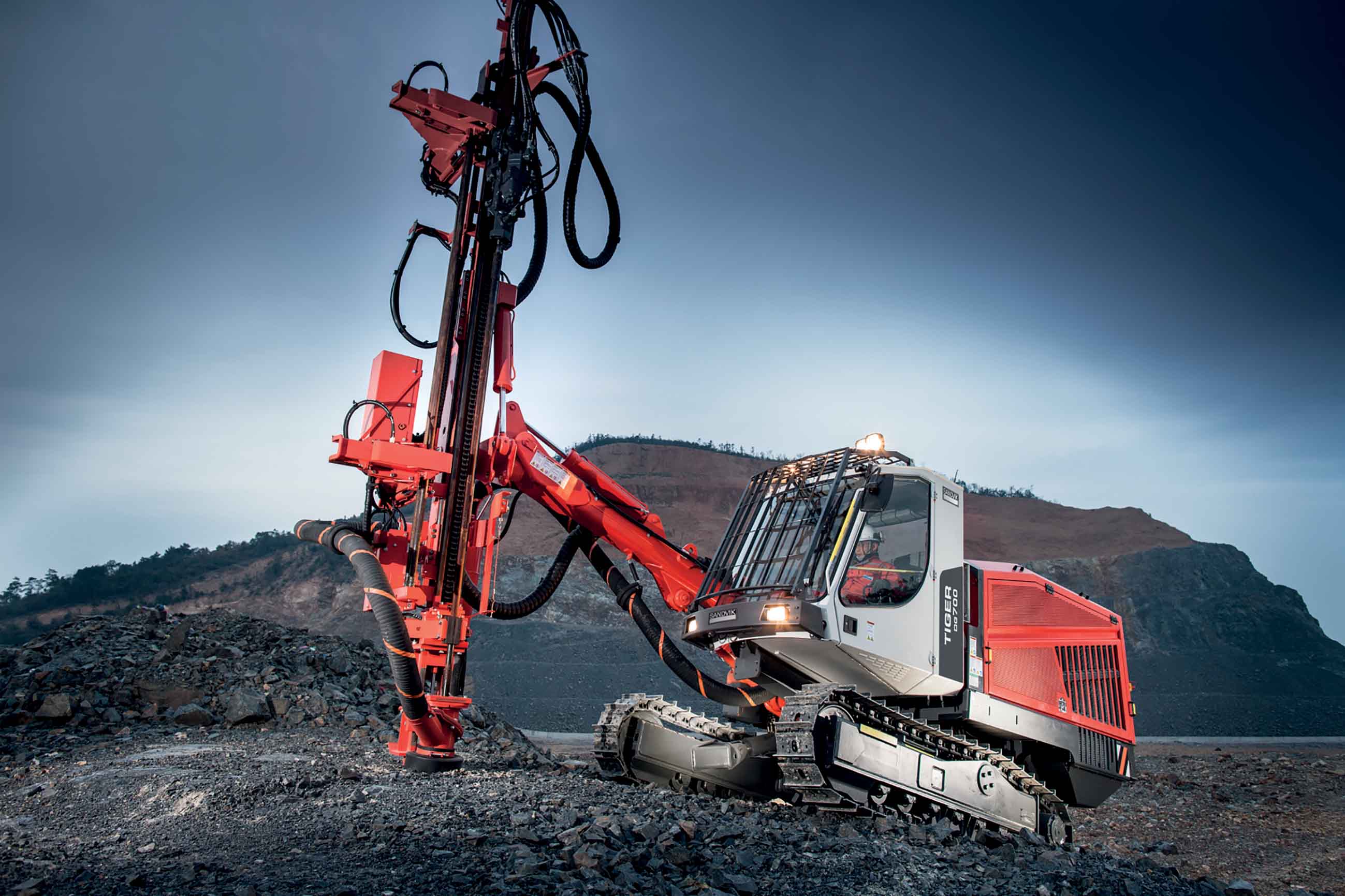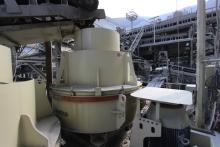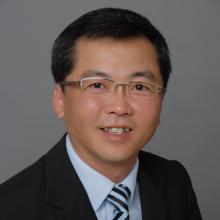
Tough economic conditions across the Asia Pacific (APAC) region have meant difficult times for construction and mining equipment manufacturers.
So says Clement Cheong,
APAC (Asia Pacific) includes South Korea, and that country has for some years now been a major international economic power, and the twelfth largest economy in the world (eleventh largest by purchasing power parity).
Since the so-called Miracle on the Han River, South Korea has seen its gross national income per capita increase rapidly from US$67 in the early 1950s to US$ 22,670 in 2012
Rapid expansion, first into light and then heavy industries, followed in the 1960s and 1970s, saw the South Korean economy grow at an average of 8.6%/ year, a growth named after the nation’s main river, the Han, which runs through Seoul, the country’s capital and largest city.
The government says that in the 1980s and 1990s growth continued as South Korea transformed itself from an exporter of mostly textiles and shoes into a major global producer of automobiles, electronics, ship building, steel and high technology products such as digital monitors, mobile phones, and semi-conductors.
According to the government, it has the third largest economy in Asia, behind Japan and China (its largest trading partner and export market), and is fourth behind China, Japan, and India by purchasing power parity.
As one of the Four Asian Tigers, it achieved rapid economic growth through exports of manufactured goods, and only recently was among the top 20 exhibiting-nations at
However, while mining and quarrying are said to be “insignificant economic activities” (compared to those mentioned), they are important to keep down imports of raw materials required for the country’s ambitious infrastructure development plans.
Only recently, an accord was sealed by Glenwood Private Equity to purchase Lafarge Halla Cement in South Korea for some KRW 630 billion (€480.22 million/US$541.14 million) from
The agreement was sealed by a consortium consisting of PEF Baring Private Equity Asia (Baring PEA) and Glenwood PE South Korea, and it is understood that the Korean Teachers’ Credit Union (KTCU) is also investing in the deal via the private equity fund managed by Glenwood Glenwood PE.
South Korea is a growing nation, and the key for any nation’s growth lies in its infrastructure development. But in Korea, the lack of highquality raw materials is limiting the development potential of its infrastructure, such as the railroad network, commercial and non-commercial buildings, and industrial hubs, and thus the growth of the entire nation.
These include the Olympic Winter Games in PyeongChang 2018, where following a recent visit by the International Olympic Committee Coordination Commission, it was agree that PyeongChang 2018 is moving in the right direction as Games preparations intensify in the final two years.
“There is still a lot of work to do, but PyeongChang 2018 is on track to deliver great Olympic Winter Games for Korea and the world. We are pleased with what we have seen and heard during our visit,” says Gunilla Lindberg, Coordination Commission chair.
“This includes highways, high-speed railway, airport and harbours as well as general building and construction projects,” says the company.
“The annual budget for the government’s infrastructure projects is approximately $21 billion dollars and the required aggregate volume is about 250million m³ /year.”
The company says that in South Korea about 400 crushing companies are in operation and annually crusher demand is about 80 crushers including jaw, cone and VSI.
“Main demand for equipment is to replace existing equipment in order to produce a higher quality aggregate with a good shape. Increasingly there is also demand for artificial sand products, for which Sandvik VSI technology is ideal. Many quarries are also looking to increase capacity and are thus replacing their existing crushers with new, high-productivity equipment,” says the company, which deals directly in South Korea, and which says its most in-demand equipment are Sandvik cone crushers CH660 and CH440 and VSI impact crusher CV229 “Due to the work we have already done the outlook is positive. We are able to show prospective customers the excellent work already being undertaken by Sandvik equipment, and the proactive customer support we are able to provide,” says Sandvik, whose first Tiger DG700 in Korea, equipped with a
From its mine in Baekwoon, the largest producer of limestone in Korea, GMC Corporation, an existing Sandvik Construction customer, produces 2 million tonnes of limestone/year.
In his report, Clement Cheong says that the economic success of the APAC (Asia-Pacific) region at the start of the century is well documented, with China the dominant engine driving growth across the region.
China’s annual GDP growth hit an incredible 14.2% in 2007, before falling to a ‘low’ of 7% in 2015.
“Countries across APAC benefited from the huge demand globally for China’s raw materials and manufactured goods, and countless companies across the region expanded their operations. All of which drove the phenomenal demand for construction and mining equipment.
From 2006 to 2012, for example, demand for heavy equipment in APAC (excluding China) was close to double from about 63,000 to a peak of 120,000 units. This fell to about 89,000 units in 2015,” he says.
“Once the boom was over and the dust had settled on the almost inevitable slump that followed, many of those same companies found themselves having to reorganise their finances and scale back operations.
By 2014/2015, there was a huge surplus of construction and mining equipment in the market, with plentiful used machines available and an excess of new stock sitting at equipment dealerships.
“Demand for off-highway trucks in the APAC region (excluding China), for example, fell by almost 63% from its 2011 peak of about 4,100 units to 1,500 in 2015 (all off-highway classes).
“There’s no doubt APAC will continue to face a major economic headwind in 2016. The market for new equipment is expected to be flat (at best) in both the construction and mining sectors. However, some commentators are suggesting we are close to the bottom of the economic cycle and will perhaps see a gradual recovery in the latter half of 2017.”
How equipment manufacturers respond to this new cycle of growth will be crucial to their future.
“At Terex Trucks we are implementing new strategies that will see even closer cooperation with our dealers, allowing us to be more responsive to changing market conditions and in finding better solutions to emergent challenges.
“As part of this new strategy we will improve on our existing dealer footprint, and support our dealer’s capabilities to supply, maintain and service customers better than ever.”
“Taken as a whole, APAC is still an attractive market and will remain an important area of focus for Terex Trucks.”
Only recently one of South Korea’s biggest business names, the
The Construction Equipment Division of HHI Group is expecting Hyundai Heavy Industries Europe (HHI Europe) to play a part in achieving this worldwide sales goal after its most successful year ever in 2015, with more than 5,000 units sold and 8% growth in turnover for construction equipment and forklifts.
HHI Europe is continuing to build its new European headquarters in Belgium. Due for completion by the end of 2016, the site in Tessenderlo will cover 81,000m² of land, and include a new main office, a new warehouse, a training facility, an event hall and a showroom.
Indeed, after securing a big order from Hyundai Engineering and Construction in 1984, Tae-hyung Enterprise entered the quarrying business. It now produces aggregates and crushed sand for the Korean market and ballast for high speed railways.
However, the raw material it uses is one of the hardest stones in Korea, and when local equipment failed to give it the desired results it turned to
Now a Metso Barmac B9100SE vertical shaft impact (VSI) crusher along with Metso’s Nordberg HP300 and HP400 cone crushers are said to be producing the required end products while production has also increased.
And just two years ago, Volvo Construction Equipment inaugurated its state-of-the-art test and development centre in Hapcheon, Gyeongsang province of Korea, 92km from the company’s existing R&D and excavator manufacturing facility in Changwon.
The new facility, which doubled









